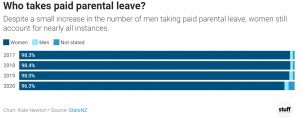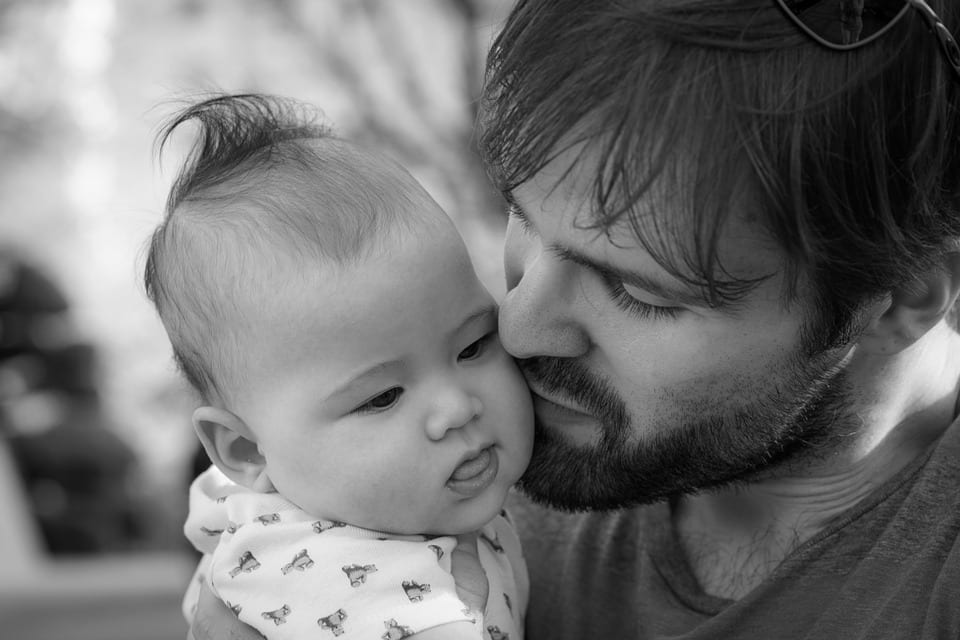Earlier this month, Stuff published an in-depth piece by Michelle Duff on men and the parental leave system, featuring expert commentary from our PPI Research Associate, Dr Suzy Morrissey.
Lagging behind As one of only four rich countries that offer no parental leave specifically ring-fenced for men, New Zealand is well behind. Most other countries in the OECD have some form of paid paternity leave, with eight countries offering more than three months. Here, the paid parental leave entitlement of 26 weeks and the extended leave of 26 weeks is attached to the birth mother. Men are allowed two weeks of unpaid partner’s leave. “You’re still working within a system where the woman is allowed the leave in the first place and having to transfer that leave to someone else,” says Dr Suzy Morrissey, a University of Auckland researcher who has done some of the most recent research into parental leave. “The man has no entitlement to paid leave in his own right.” While the mother can transfer all or part of her year’s leave to a nominated “primary carer”, it is unclear how many people do this.

But no-one collects data on who is taking the second 26 weeks, when anecdotally more men do step in to caring roles, and how financial and social pressures influence their choice. (Data suggest that overall, around 15 per cent of those who stay home with children of all ages are men. In March this year around 20,000 men said they were out of the workforce looking after a child, compared to 128,000 women.) ”They obviously haven’t identified a need to know it,” says Morrissey. “The fact is, we’re asking men to take this leave even though it’s unrealistic, they’re having to take it most likely for a pay cut, and with no other support or encouragement. “How acceptable or easy do we make it for men to be parents?”

As far back as 2008, two government reports said the “time is right” for a paid parental leave entitlement to be ring-fenced for fathers. “There is a sizeable gap between the aspirations of parents that fathers spend more time caring for their children, and the actual time fathers spend with their babies and children,” the authors wrote. Yet changes since then have only tweaked the system or added more time for the primary carer. Dr Suzy Morrissey says the financial barriers to men taking paid parental leave are considerable. Men still typically earn more than women. Paid parental leave has a cap of $606.46, compared to a median average weekly income of $1085.51. Research from the OECD shows men don’t take leave if it’s not well-paid. The fact it’s paid so low, at an equivalent of 30 hours a week at minimum wage, reflects how little care work is valued, Morrissey says. Compare this to ACC, which provides much more generous wage replacement for an injury, which also requires time off work. “It suggests reluctance to view this as an employment-related policy,” she says. “There needs to be increased leave for fathers or partners, instead of the mother giving it up.”
Read Michelle’s full article here.
Originally published in Stuff, 4 July 2021.

